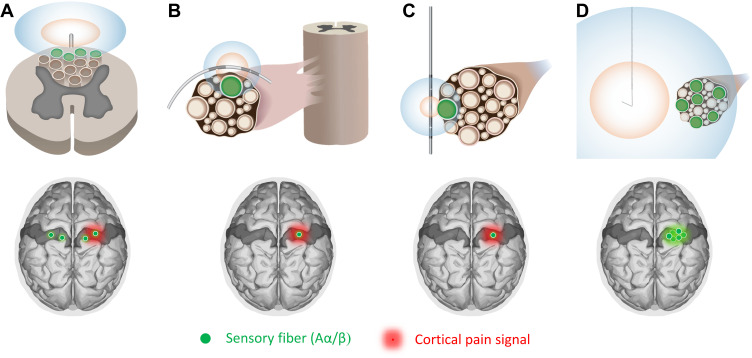Figure 4.
Varying degrees of cortical activation using different stimulation methods. Optimal induction of cortical remapping requires selective activation of a large number of afferent fibers (ie, robust activation) that is generated focally (ie, from the region of pain). The activation zones are shown for Aα/β fibers (blue) and Aδ/C fibers (orange). (A) SCS activates a small number of fibers in the superficial dorsal column before reaching discomfort thresholds due to dorsal root activation, and the dorsal column fibers it does activate are commonly spread across multiple dermatomes. The afferent input to S1 is thus neither robust nor focal. Conventional DRGS (B) or PNS (C) can more focally target the dermatome and/or nerve innervating the specific region of pain, though DRGS often involves multi-level stimulation, but limitations with conventional systems and stimulation strategies curb the degree of large diameter fiber activation before reaching discomfort thresholds due to small diameter nociceptor activation. The afferent input to S1 is thus more focal than SCS but not robust. (D) Percutaneous PNS with remote selective targeting enables both focal and robust activation of the target nerves, potentially resulting in optimal cortical input to induce activity-dependent remapping and sustained analgesia, facilitating reconditioning of the CNS.

